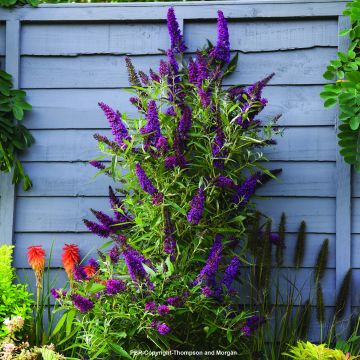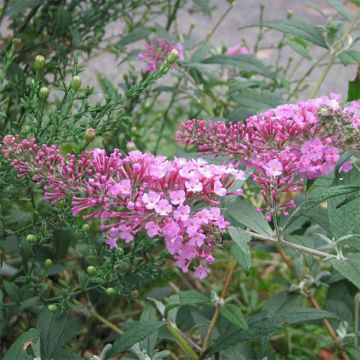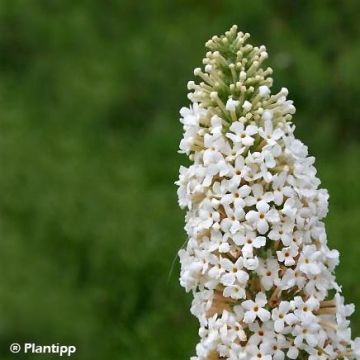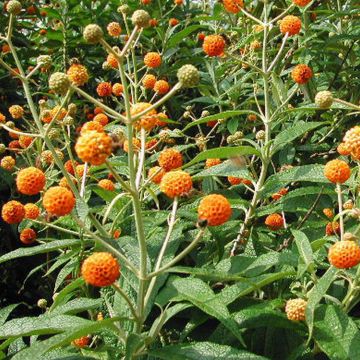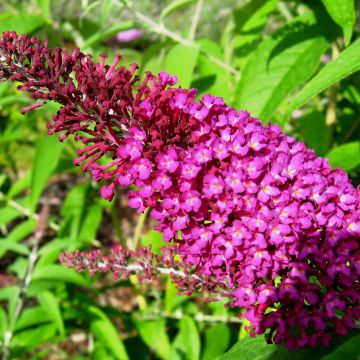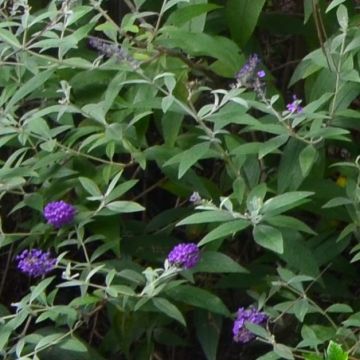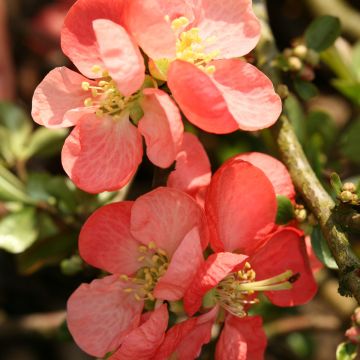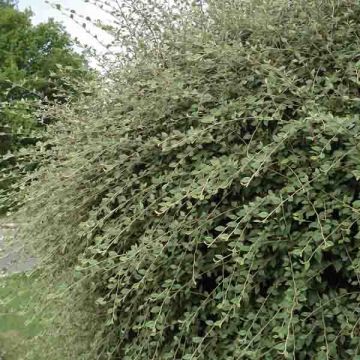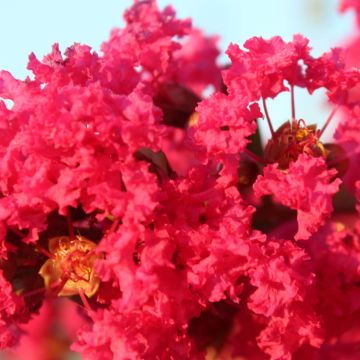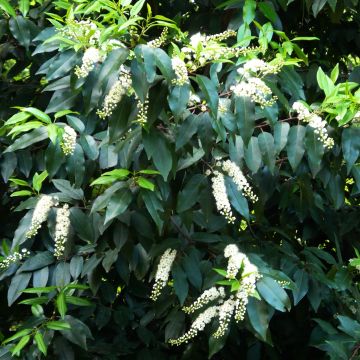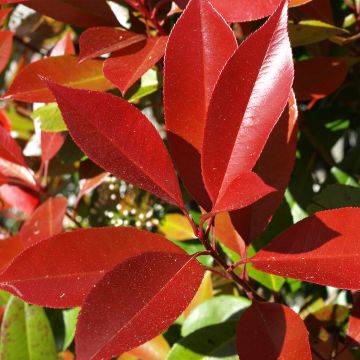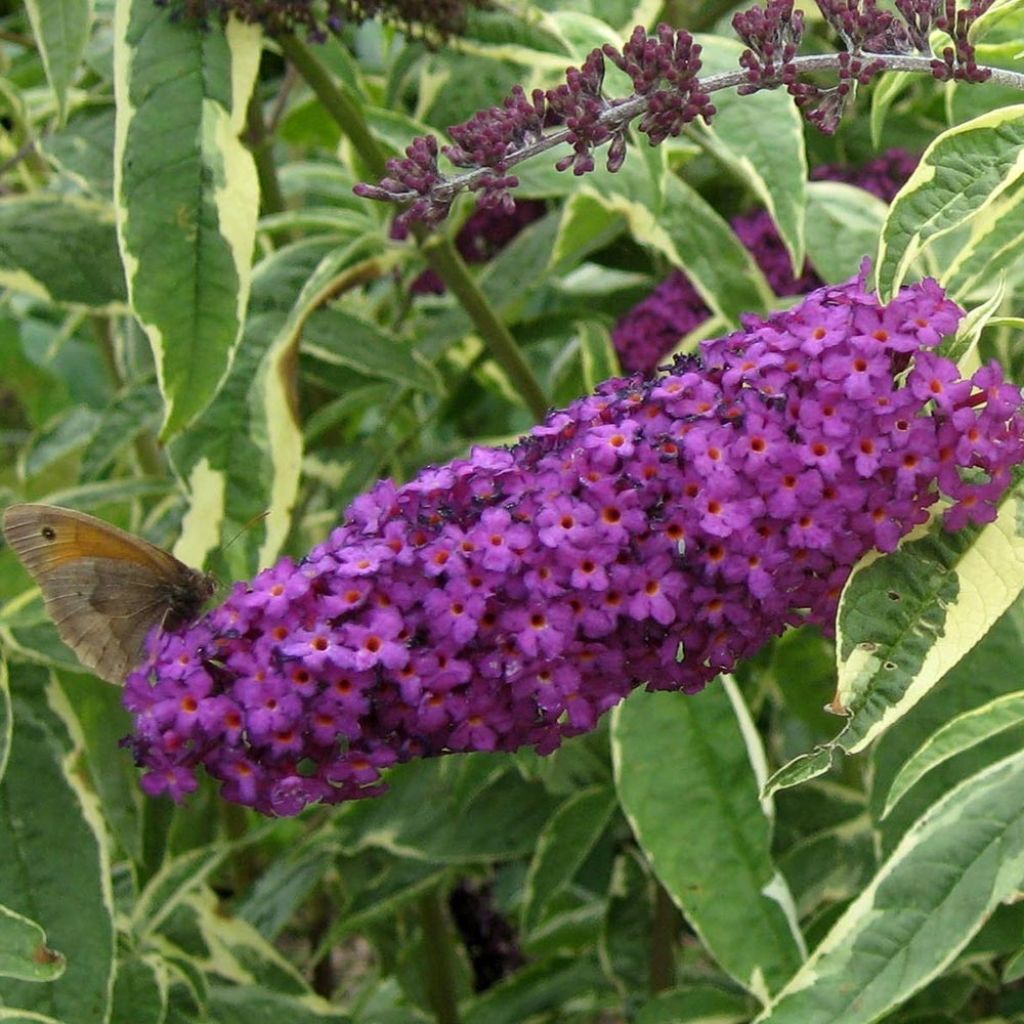

Buddleja davidii Harlequin - Butterfly Bush
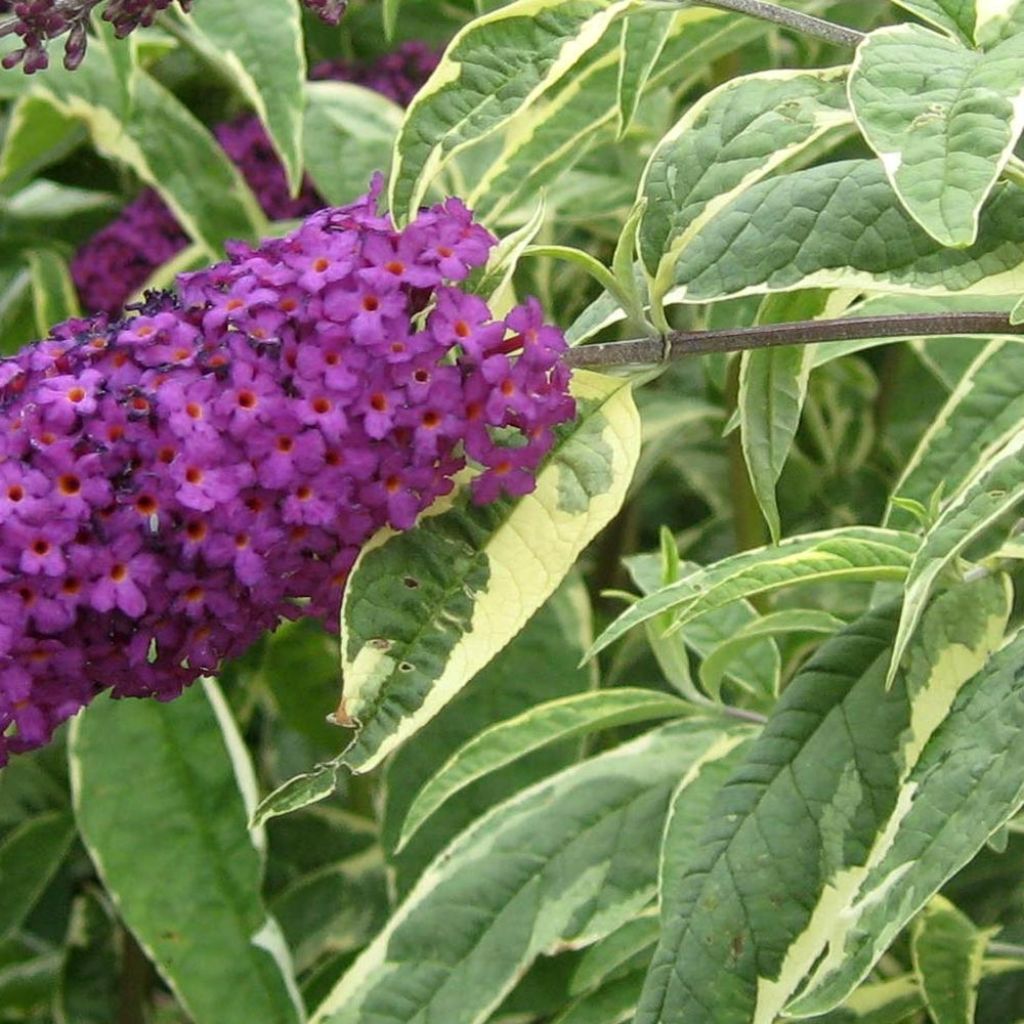

Buddleja davidii Harlequin - Butterfly Bush
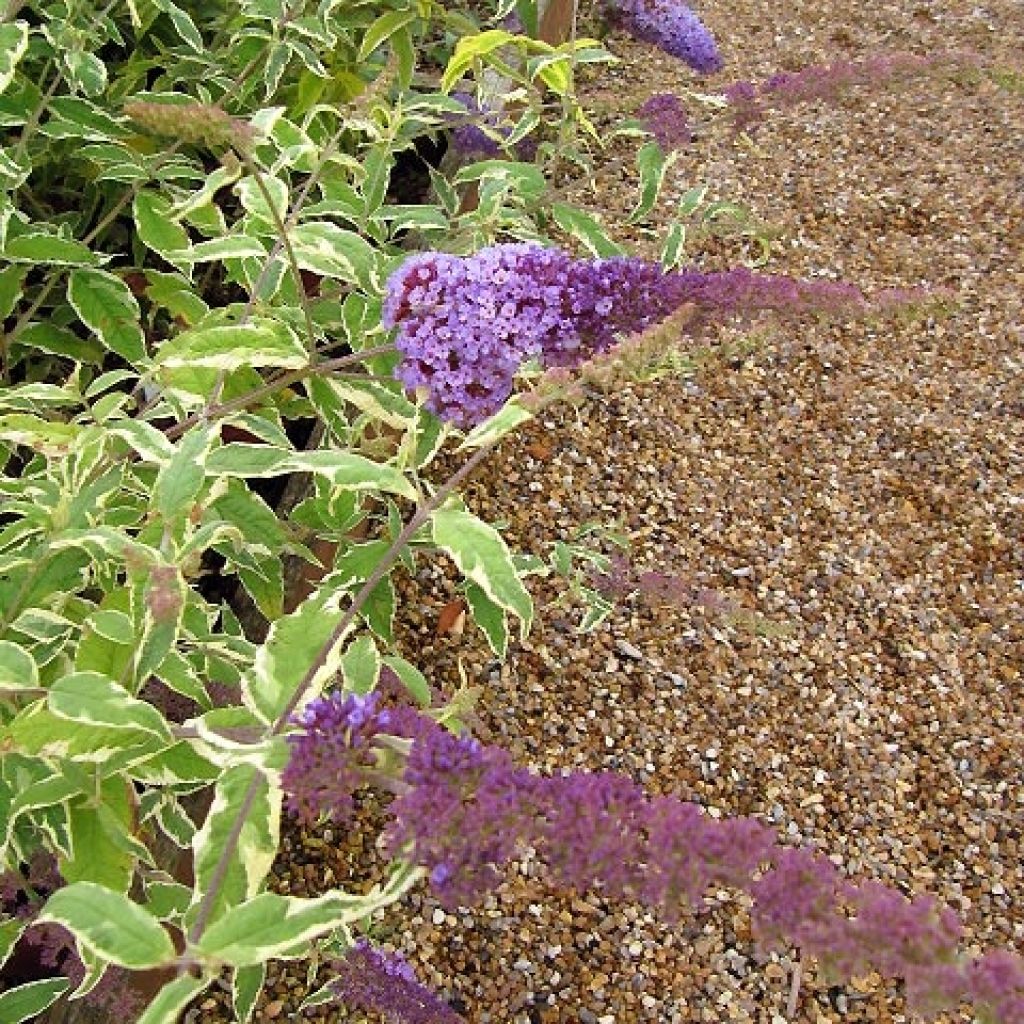

Buddleja davidii Harlequin - Butterfly Bush
Buddleja davidii Harlequin - Butterfly Bush
Buddleja x davidii Harlequin
Butterfly Bush, Summer Lilac
This item cannot be shipped to the selected country
Delivery charge from €5.90
More information
Schedule delivery date,
and select date in basket
This plant carries a 24 months recovery warranty
More information
We guarantee the quality of our plants for a full growing cycle, and will replace at our expense any plant that fails to recover under normal climatic and planting conditions.
From €5.90 for pickup delivery and €6.90 for home delivery
Express home delivery from €8.90.

Does this plant fit my garden?
Set up your Plantfit profile →
Description
Buddleja davidii 'Harlequin' is a medium-sized bush with a rounded and flexible habit. It is a particularly decorative and unique variety. Its foliage stands out with its variegated colouring, which is green edged with cream. It serves as a backdrop for long inflorescences of a sumptuous deep purple-red, exuding a fragrance that matches their colour: rich and intense, and visibly addictive to many butterflies. This flowering animates the whole summer. It is easy to grow in ordinary soil, even poor and occasionally dry soil. Buddlejas are often the centrepiece of large shrub borders and flowering hedges. This variety, with the beauty of its foliage, will be attractive for a long time, from spring to autumn.
Buddleja davidii 'Harlequin' is a deciduous to semi-evergreen bush belonging to the Scrophulariaceae (Buddlejaceae) family. This superb cultivar, obtained in England in 1964, comes from a mutation of the famous Buddleja davidii 'Royal Red' - itself derived from Buddleja davidii, also known as Father David's Buddleja or Changing Buddleja, a robust Chinese species that has become invasive in our climate.
'Harlequin' has a rounded and gracefully spreading habit, supported by arching branches. Fairly compact, it rarely exceeds 2 m (7 ft) in all directions within 7 or 8 years, depending on the growing conditions. It flowers from July to September to produce an abundance of dense panicles of flowers 25 to 35 cm (10 to 14 in) long. These flowers are purplish-violet with a reddish-orange eye and release a sweet fragrance, which is very attractive to pollinating insects. Its ornamental foliage is composed of long leaves with an irregular green-grey edge and a creamy-white margin, with the undersides covered in a greyish fuzz. The leaves, 15 to 25 cm (6 to 10 in) long, are pointed and lanceolate. This hardy bush is resistant to urban pollution and does not suffer from occasional drought when planted in deep soil.
Whether planted individually or in groups, in a hedge, at the corner of a terrace, or at the back of a perennial border, Buddleja davidii 'Harlequin' will enhance the garden in a unique way. Its almost red inflorescences, animated by a constant flight of butterflies, are a spectacle in themselves. They also highlight the blue flowers of Ceanothus 'Gloire de Versailles', for example, or the mauve and white panicles of some summer lilacs. You can also plant it in a mixed hedge, with botanical roses, serviceberries, hawthorns, ornamental apple trees, or other prunus. It adapts well to coastal areas and can be grown in containers on a terrace. Its fragrant flowers are also very pretty in bouquets. You can combine this buddleja with tall grasses (Miscanthus, Panicum, Deschampsia), for an elegant contrast.
Report an error about the product description
Buddleja davidii Harlequin - Butterfly Bush in pictures
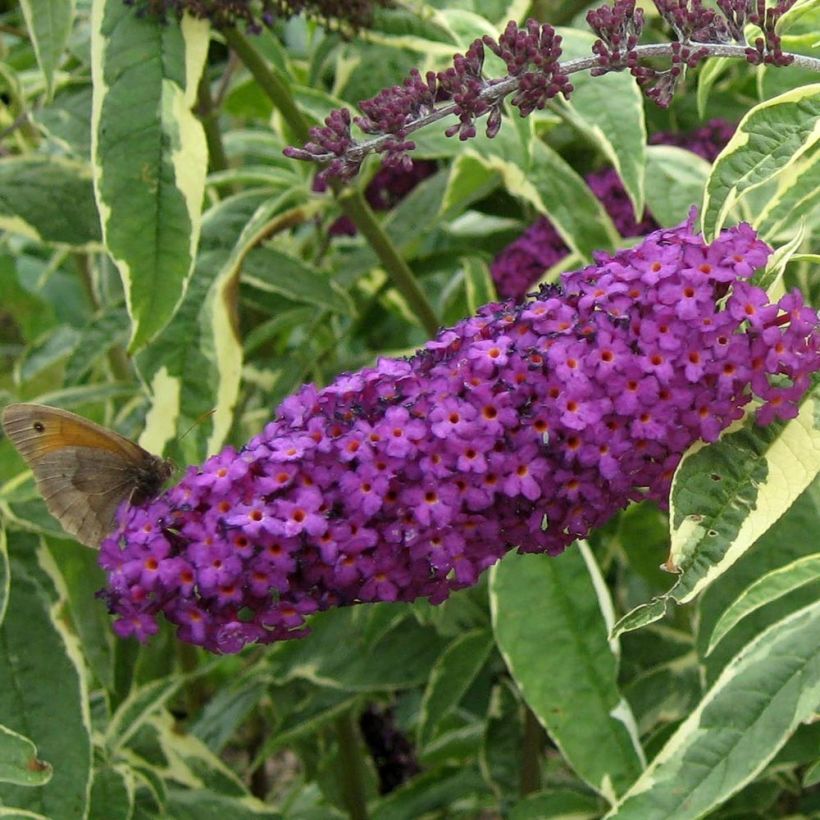

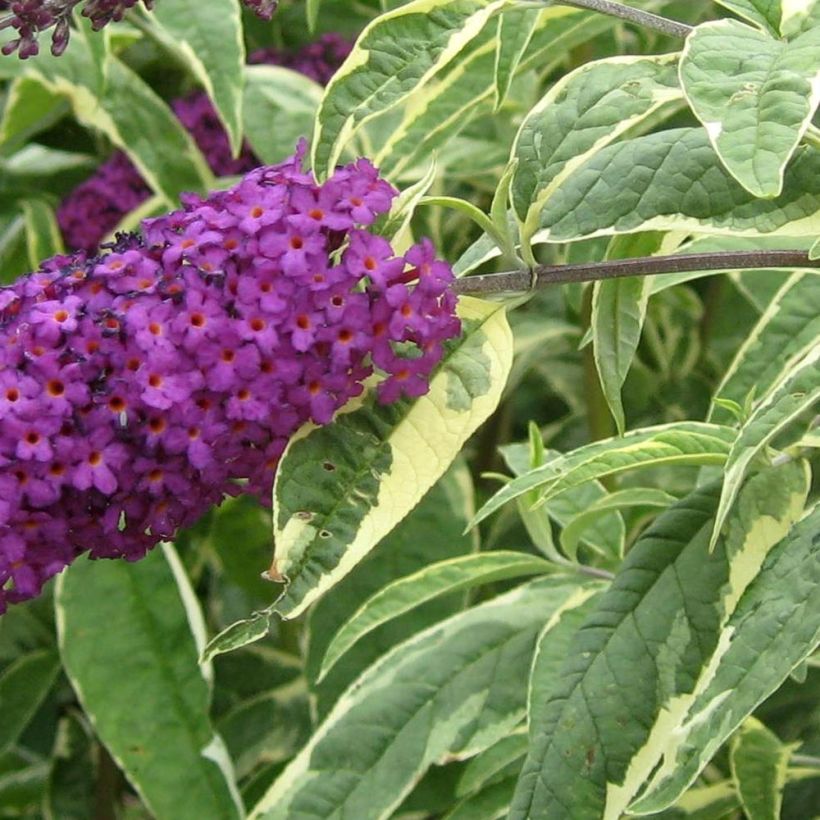

Plant habit
Flowering
Foliage
Botanical data
Buddleja
x davidii
Harlequin
Buddlejaceae
Butterfly Bush, Summer Lilac
Cultivar or hybrid
Other Buddleja -Butterfly bush
Planting and care
Buddleja davidii 'Harlequin' is easy to grow, as it is a low-maintenance plant. It thrives in sunny locations, but also flowers in partial shade. Plant it in spring or early autumn, in ordinary, well-worked and well-drained soil. It can tolerate limestone and poor soil. Once established, the plant will tolerate periods of moderate drought. It has no significant enemies. However, beware of caterpillars, weevils, and red spider mites that can infest it. Pruning vigorously after flowering and/or in early spring maintains a compact and branching habit and encourages abundant flowering.
Planting period
Intended location
Care
-
, onOrder confirmed
Reply from on Promesse de fleurs
Hedge shrubs
Haven't found what you were looking for?
Hardiness is the lowest winter temperature a plant can endure without suffering serious damage or even dying. However, hardiness is affected by location (a sheltered area, such as a patio), protection (winter cover) and soil type (hardiness is improved by well-drained soil).

Photo Sharing Terms & Conditions
In order to encourage gardeners to interact and share their experiences, Promesse de fleurs offers various media enabling content to be uploaded onto its Site - in particular via the ‘Photo sharing’ module.
The User agrees to refrain from:
- Posting any content that is illegal, prejudicial, insulting, racist, inciteful to hatred, revisionist, contrary to public decency, that infringes on privacy or on the privacy rights of third parties, in particular the publicity rights of persons and goods, intellectual property rights, or the right to privacy.
- Submitting content on behalf of a third party;
- Impersonate the identity of a third party and/or publish any personal information about a third party;
In general, the User undertakes to refrain from any unethical behaviour.
All Content (in particular text, comments, files, images, photos, videos, creative works, etc.), which may be subject to property or intellectual property rights, image or other private rights, shall remain the property of the User, subject to the limited rights granted by the terms of the licence granted by Promesse de fleurs as stated below. Users are at liberty to publish or not to publish such Content on the Site, notably via the ‘Photo Sharing’ facility, and accept that this Content shall be made public and freely accessible, notably on the Internet.
Users further acknowledge, undertake to have ,and guarantee that they hold all necessary rights and permissions to publish such material on the Site, in particular with regard to the legislation in force pertaining to any privacy, property, intellectual property, image, or contractual rights, or rights of any other nature. By publishing such Content on the Site, Users acknowledge accepting full liability as publishers of the Content within the meaning of the law, and grant Promesse de fleurs, free of charge, an inclusive, worldwide licence for the said Content for the entire duration of its publication, including all reproduction, representation, up/downloading, displaying, performing, transmission, and storage rights.
Users also grant permission for their name to be linked to the Content and accept that this link may not always be made available.
By engaging in posting material, Users consent to their Content becoming automatically accessible on the Internet, in particular on other sites and/or blogs and/or web pages of the Promesse de fleurs site, including in particular social pages and the Promesse de fleurs catalogue.
Users may secure the removal of entrusted content free of charge by issuing a simple request via our contact form.
The flowering period indicated on our website applies to countries and regions located in USDA zone 8 (France, the United Kingdom, Ireland, the Netherlands, etc.)
It will vary according to where you live:
- In zones 9 to 10 (Italy, Spain, Greece, etc.), flowering will occur about 2 to 4 weeks earlier.
- In zones 6 to 7 (Germany, Poland, Slovenia, and lower mountainous regions), flowering will be delayed by 2 to 3 weeks.
- In zone 5 (Central Europe, Scandinavia), blooming will be delayed by 3 to 5 weeks.
In temperate climates, pruning of spring-flowering shrubs (forsythia, spireas, etc.) should be done just after flowering.
Pruning of summer-flowering shrubs (Indian Lilac, Perovskia, etc.) can be done in winter or spring.
In cold regions as well as with frost-sensitive plants, avoid pruning too early when severe frosts may still occur.
The planting period indicated on our website applies to countries and regions located in USDA zone 8 (France, United Kingdom, Ireland, Netherlands).
It will vary according to where you live:
- In Mediterranean zones (Marseille, Madrid, Milan, etc.), autumn and winter are the best planting periods.
- In continental zones (Strasbourg, Munich, Vienna, etc.), delay planting by 2 to 3 weeks in spring and bring it forward by 2 to 4 weeks in autumn.
- In mountainous regions (the Alps, Pyrenees, Carpathians, etc.), it is best to plant in late spring (May-June) or late summer (August-September).
The harvesting period indicated on our website applies to countries and regions in USDA zone 8 (France, England, Ireland, the Netherlands).
In colder areas (Scandinavia, Poland, Austria...) fruit and vegetable harvests are likely to be delayed by 3-4 weeks.
In warmer areas (Italy, Spain, Greece, etc.), harvesting will probably take place earlier, depending on weather conditions.
The sowing periods indicated on our website apply to countries and regions within USDA Zone 8 (France, UK, Ireland, Netherlands).
In colder areas (Scandinavia, Poland, Austria...), delay any outdoor sowing by 3-4 weeks, or sow under glass.
In warmer climes (Italy, Spain, Greece, etc.), bring outdoor sowing forward by a few weeks.


































